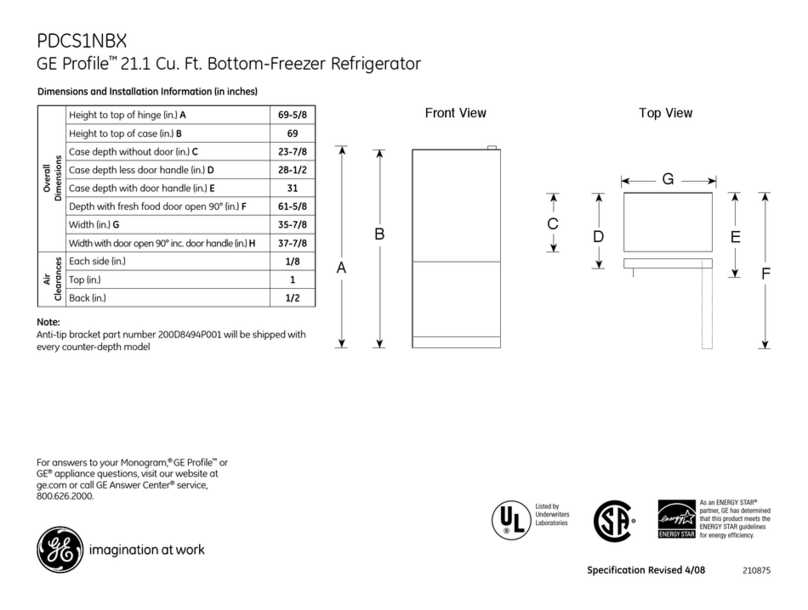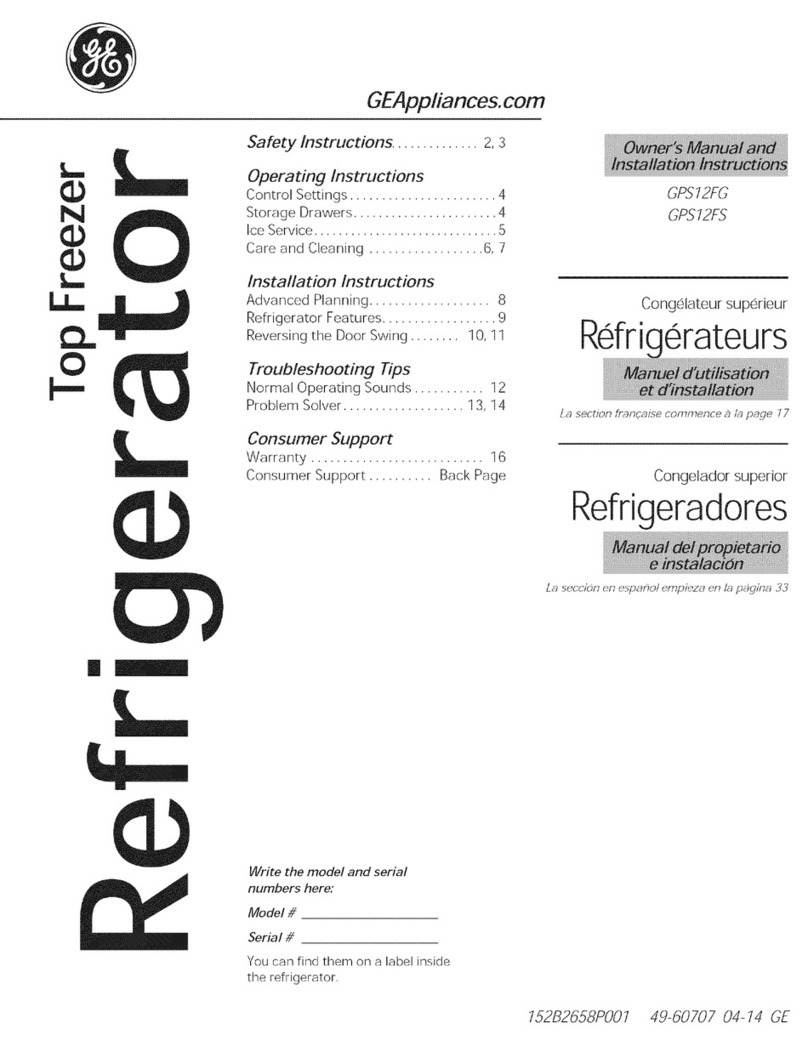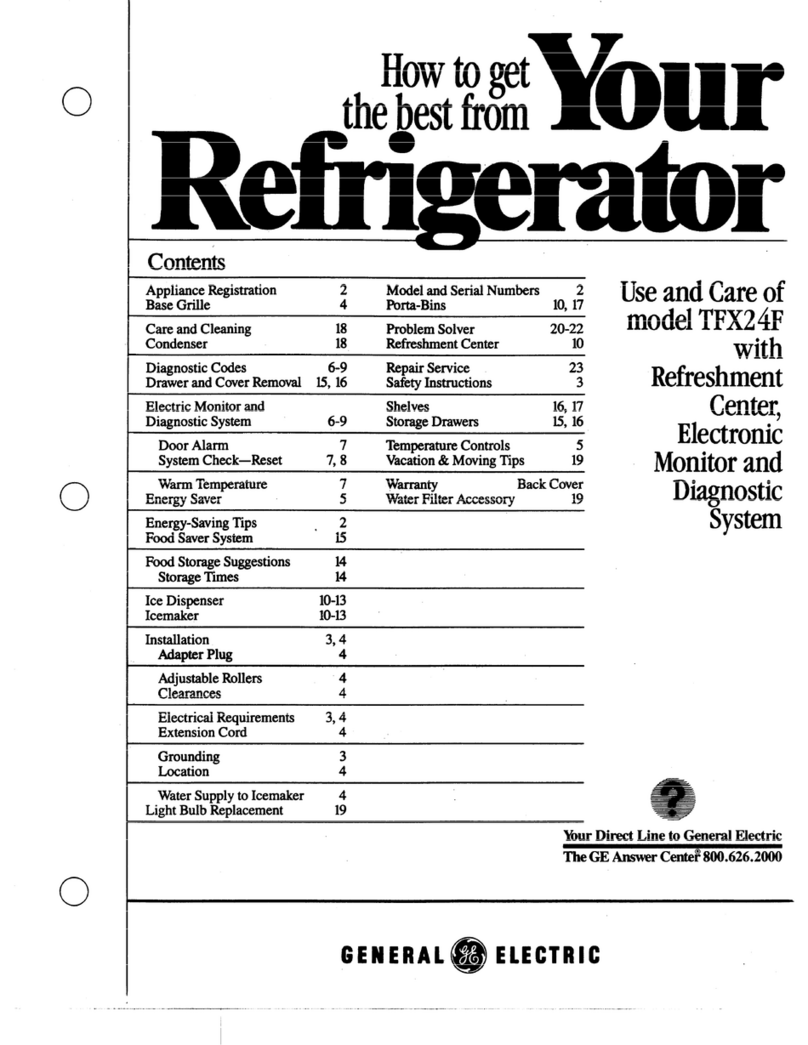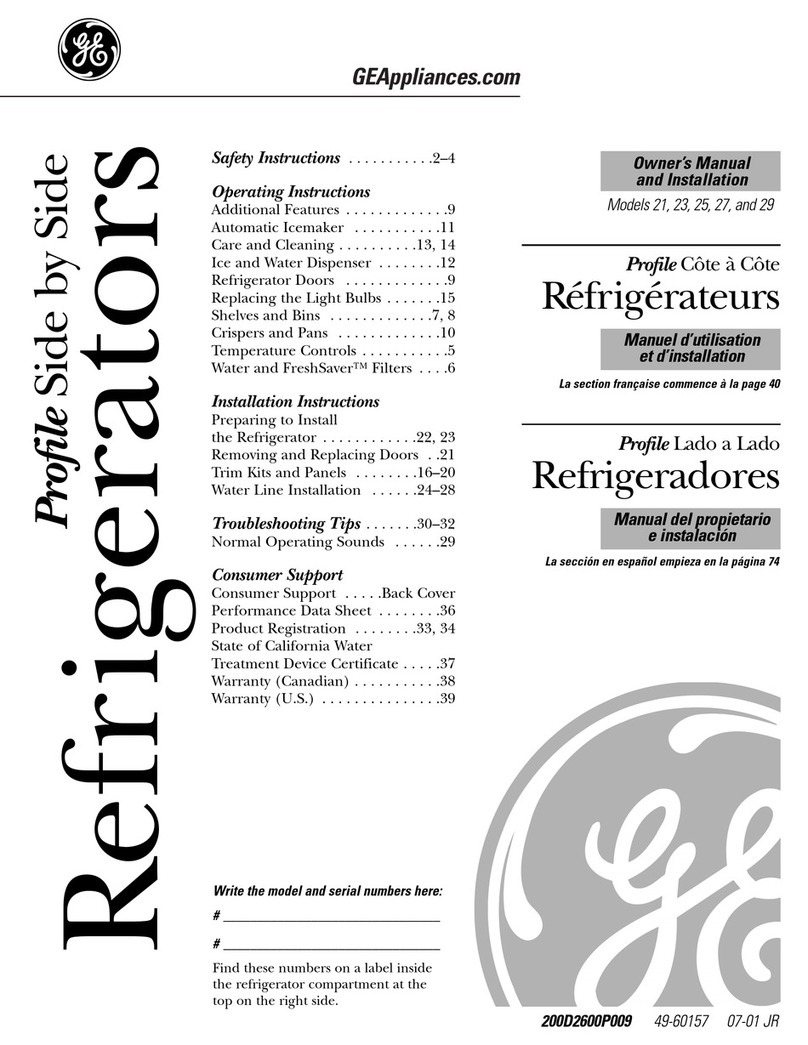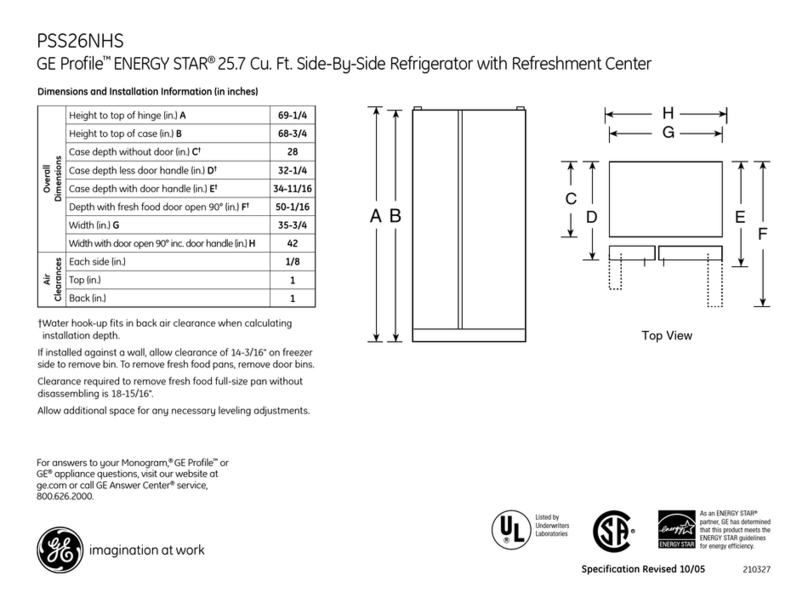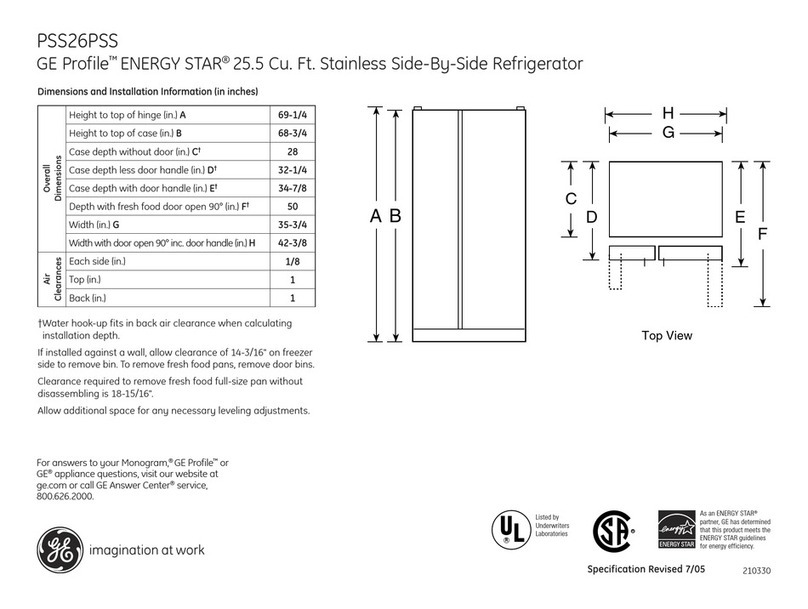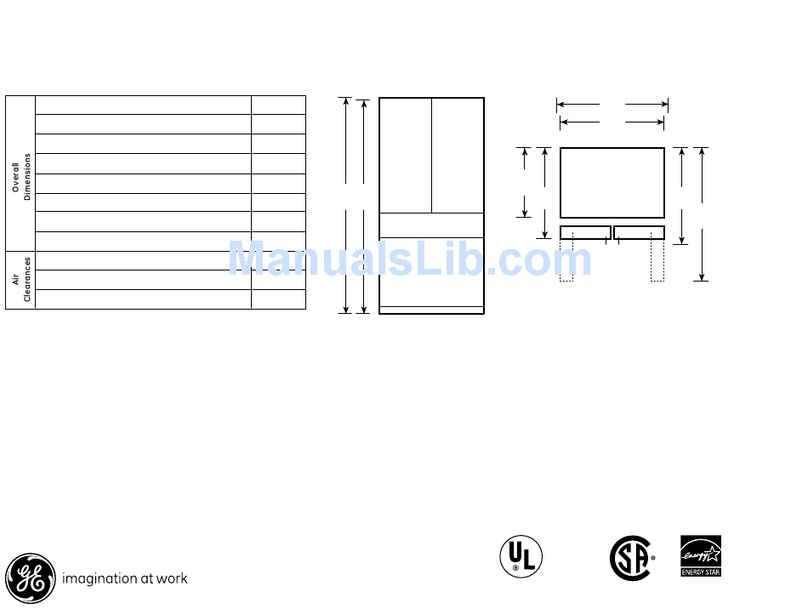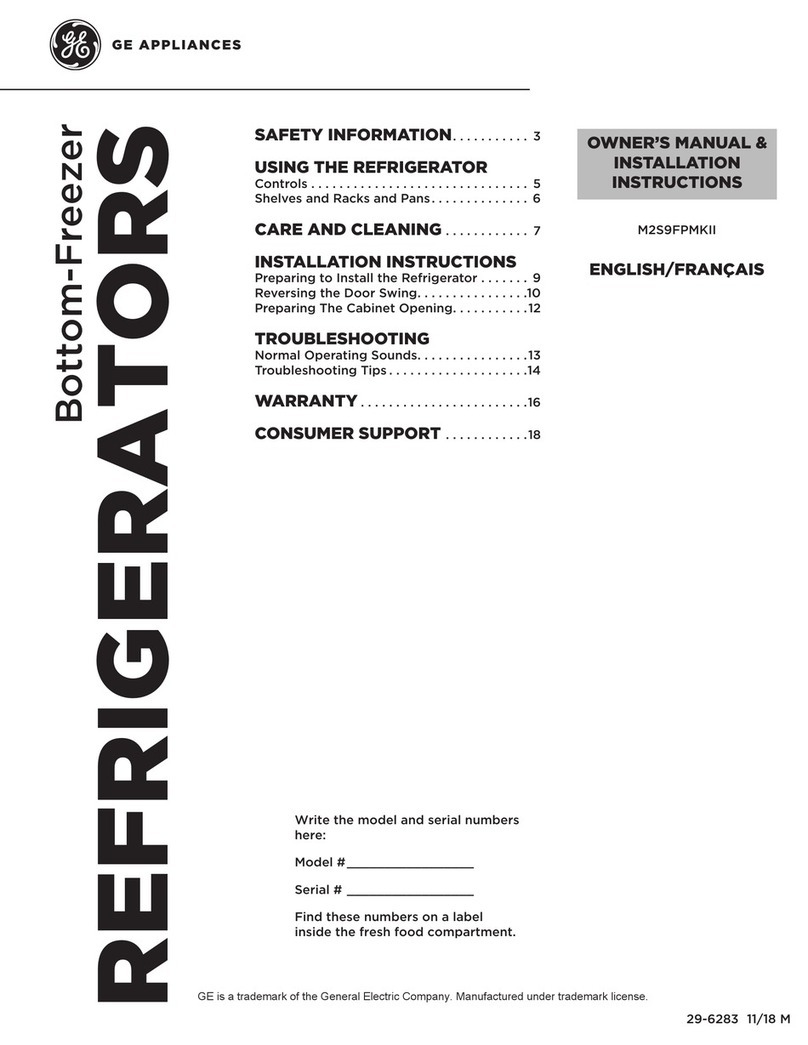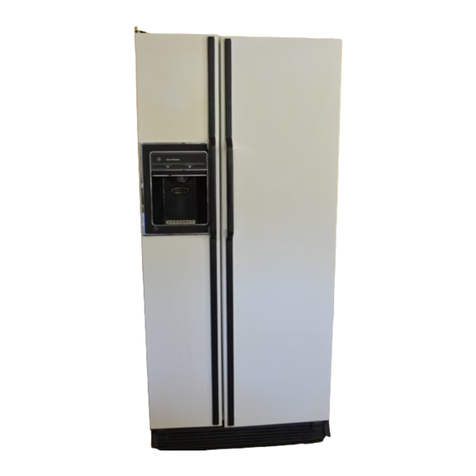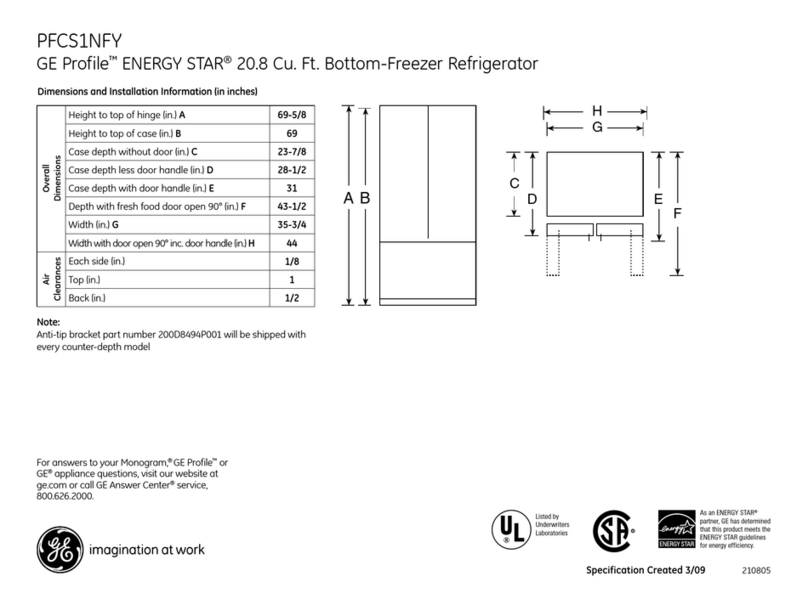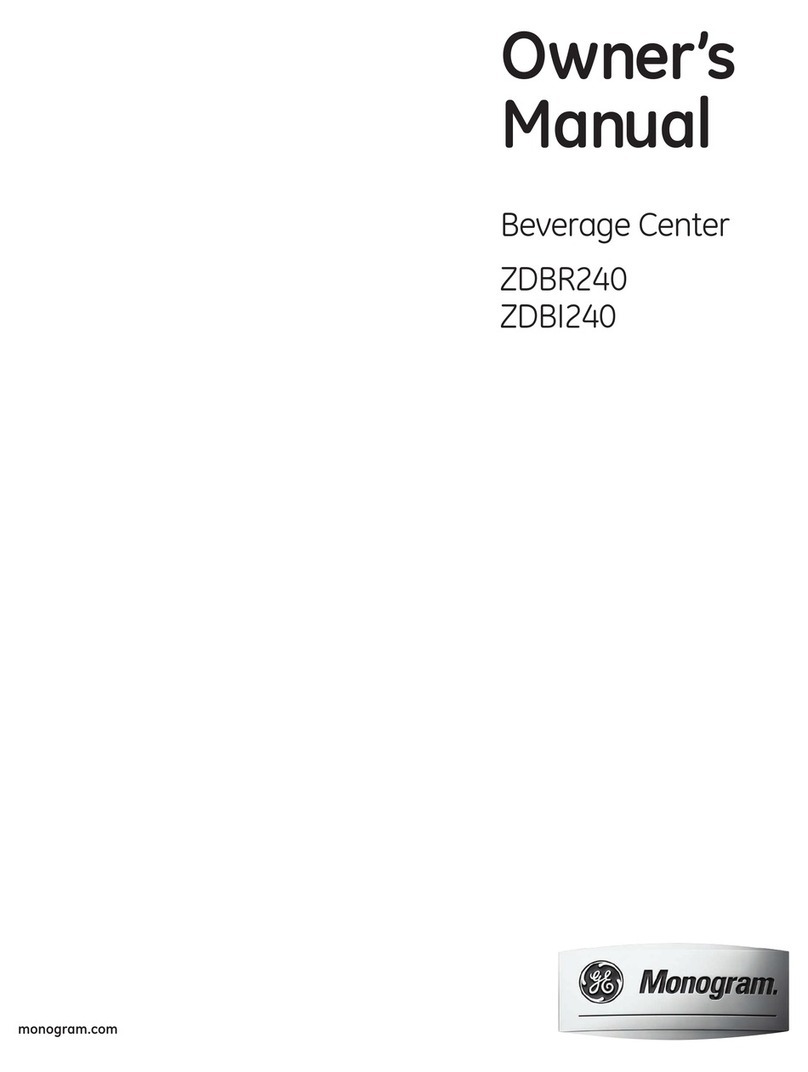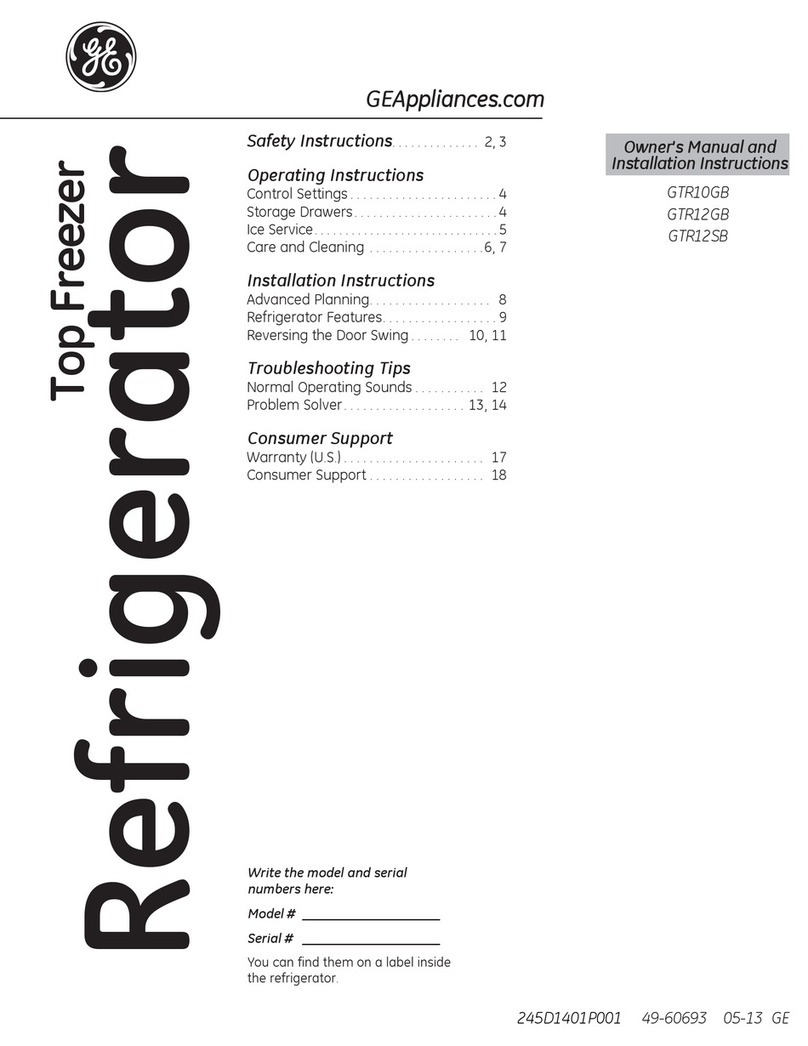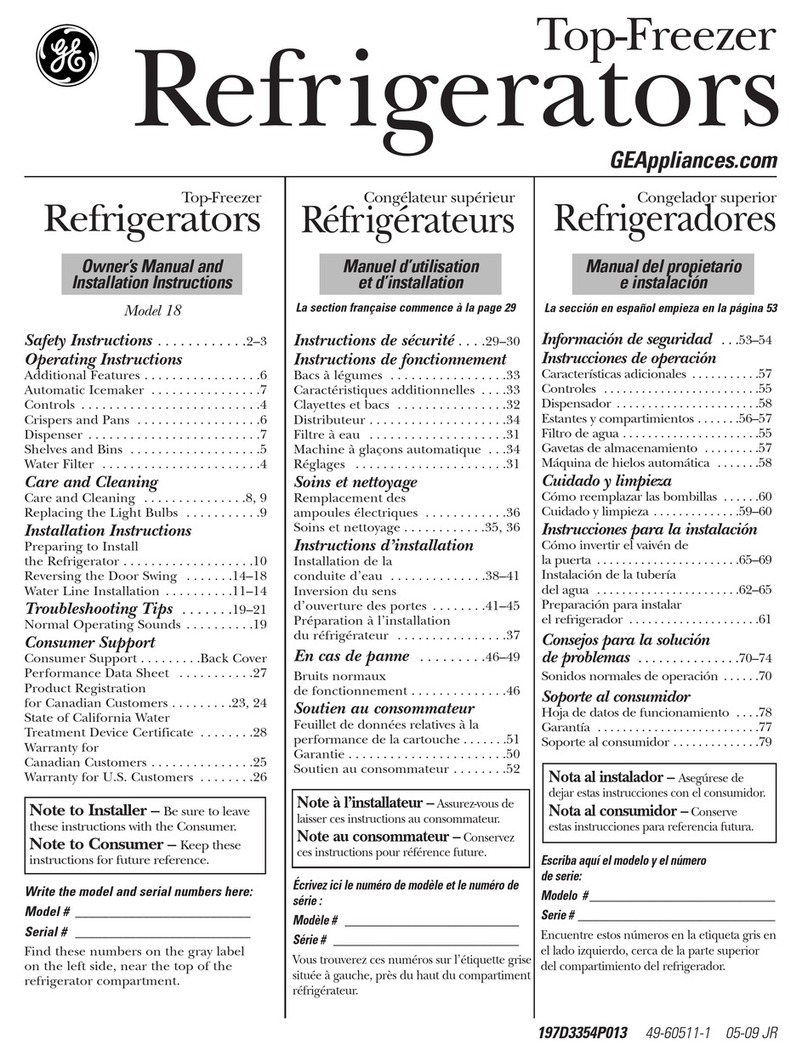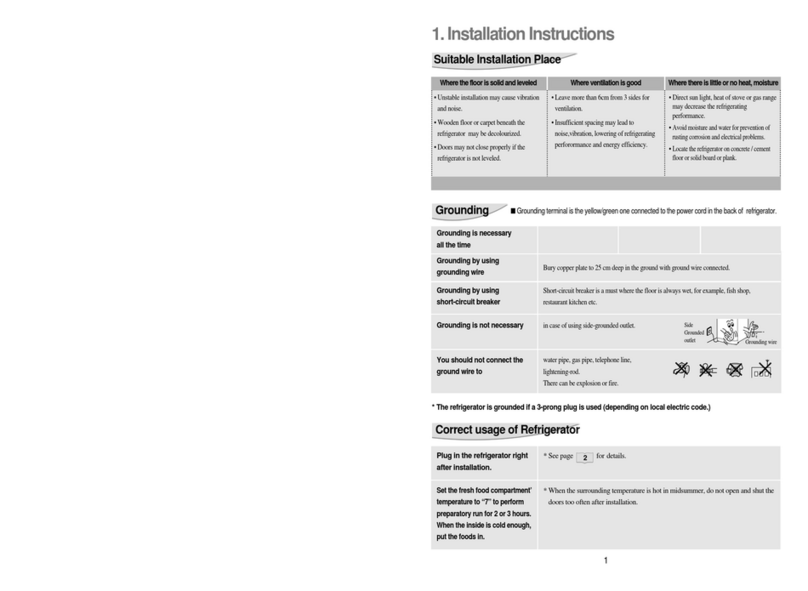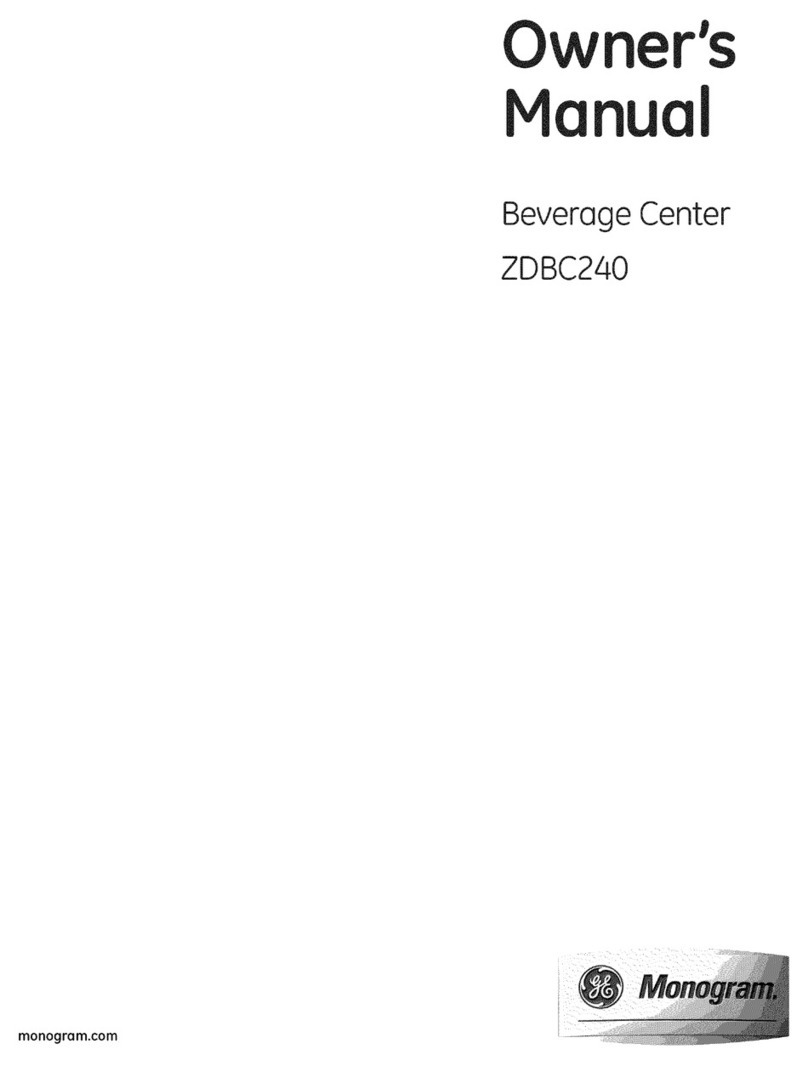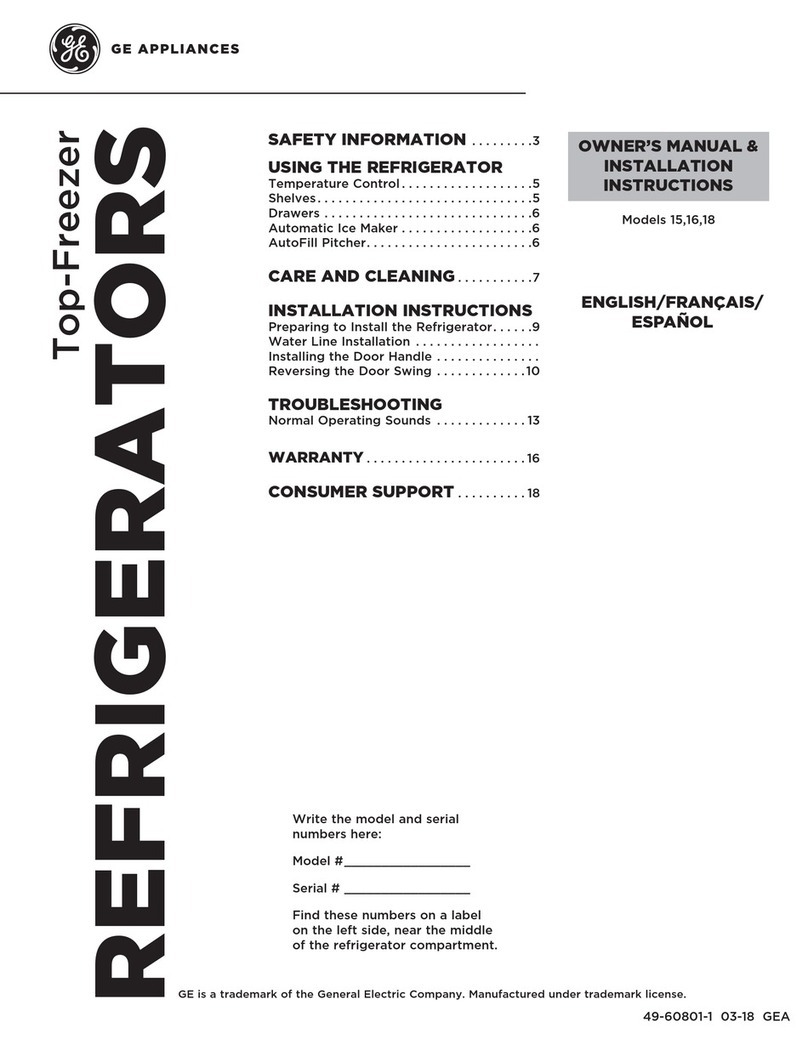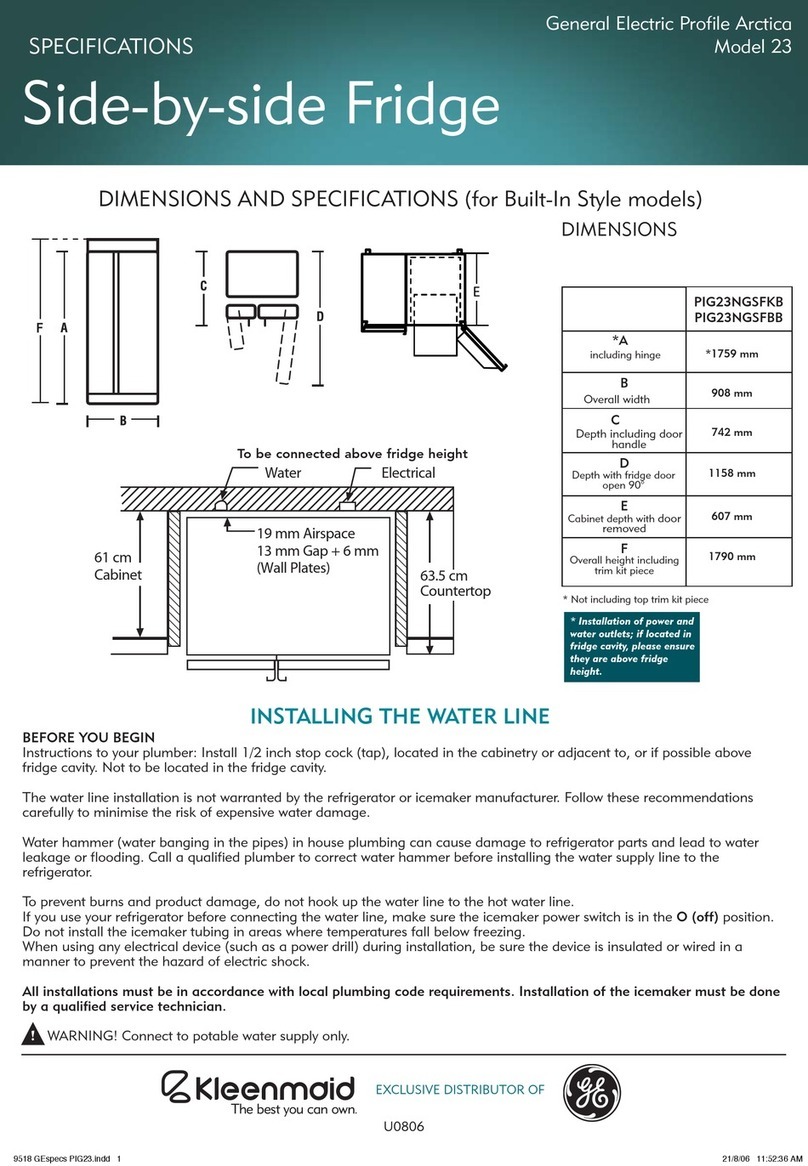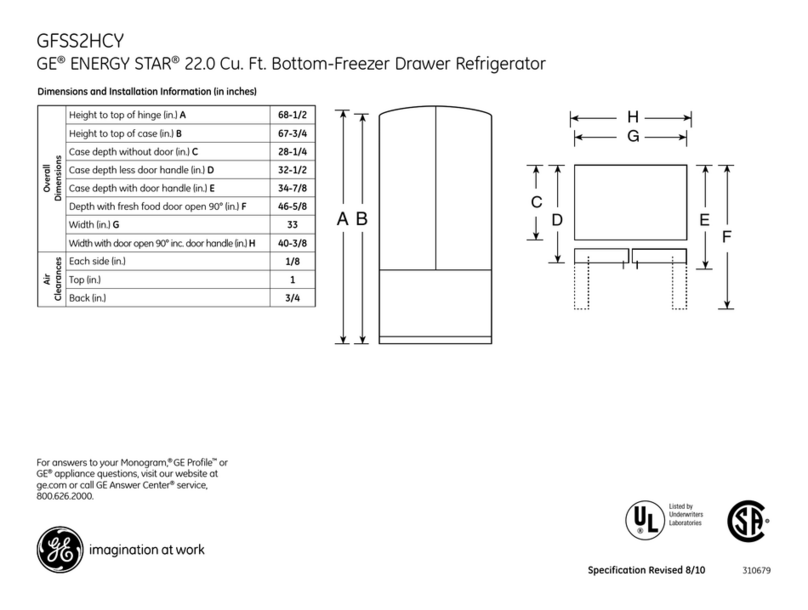
– 10
Liner Protection Mode
The dual evaporator model has separate liner
protection modes for each section. The specific
evaporator fan (freezer or fresh food) will start
and run on high speed if the door has been open
for 3 minutes.
This mode is controlled by 2 timers. Timer #1
monitors door-open time. A 3-minute door-open
count begins when the door is opened. If 3
minutes elapse before the door is closed, the liner
protection mode will become active. Once the
door is closed, timer #1 resets and liner protection
mode goes into standby. In standby, normal
fan operation resumes and timer #2 begins a
3-minute door-closed count. If 3 minutes elapse
without a door opening, liner protection mode will
completely deactivate. If a door is opened within
the timer #2 door-closed count, the remaining
time in the door-closed count will be deducted
from the timer #1 door-open count.
Dispenser Light
The LIGHT pad turns the dispenser light on and
off. When the light is turned off, it will fade out.
The dispenser light will come on automatically
when the dispenser cradle is depressed and will
fade out 5 seconds after it is released. The LIGHT
pad will not turn off the light during dispensing.
Dispensing Functions
The water, crushed ice, and cubed ice functions
are controlled by the main control board. To
select a function, press the appropriate pad on
the dispenser. The LED will light to identify the
selection.
To dispense ice cubes or crushed ice, choose
the appropriate pad and depress the dispenser
cradle. The solenoid and linkage assembly will
open the ice chute duct door to dispense the
ice. If cubed ice is selected, a solenoid located
behind the ice bucket will lift a rod along the side
of the bucket. This rod pulls a flapper away from
the cutter blades, allowing cubes to bypass the
ice crusher. The dispenser duct door will remain
open for 3 seconds after dispensing to allow all
ice to clear the chute.
The dispenser light will come on automatically
when the dispenser cradle is depressed and will
fade out 5 seconds after it is released.
To lock or unlock communication between the
dispenser and main control board, press the
LOCK pad and hold it for 3 seconds. The LOCK
LED will flash while the LOCK pad is pressed.
When the communication is locked, the LOCK
LED will be illuminated.
The status of other functions selected prior to the
initiation of the lock feature will be displayed. If
the lock is engaged while a mode is active, the
LED will remain on until that mode times out.
If the lock is engaged when the filter timer
expires, the LED will come on but cannot be reset
until the lock is turned off.
The lock feature will be restored in the event of a
power disruption.
Dispenser Lock
When the dispenser system is locked, no
dispenser command will be accepted. This
includes the dispenser cradle and will prevent
accidental dispensing that may be caused
by children or pets. If a pad or the cradle is
depressed with the system locked, it will be
acknowledged with three pulses of the LOCK
LED accompanied by an audible tone.
